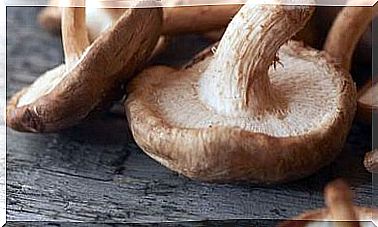Mindful Eating To Eat Without Anxiety
Eating is not a banal act. Each food arrives at our table preceded by an amazing story. If we receive it with gratitude and attention, we will be connecting to the present. That will allow us to eat consciously and without anxiety.

Conscious eating or mindful eating is a key tool to reconcile with emotional hunger and also to reconnect with physiological hunger signals.
- Full attention. If mindfulness is the technique that allows you to experience the present moment, recognizing with a calm attitude the succession of emotions, physical sensations and thoughts that appear, without being carried away by them, mindful eating teaches how to eat without distractions, fully concentrating on colors, aromas and textures of food.
- Helpful serenity. The regular practice of mindful eating has been proven effective in controlling and reducing body weight, as well as in avoiding anxiety. Studies like the one conducted by Dr. Jeanne Dalen and published in Complementary Therapies in Medicine say so.
- Slow reflection. Mindful eating begins before sitting at the table and continues after the meal is finished. It consists of asking yourself questions like: why have I chosen this food and not another? or what do I want to get from him? Asking these questions helps to replace certain automatisms with healthier and more conscious attitudes.
How to give value to food
Mindful eating allows you to give value to food, enjoy it, which reduces anxiety when eating. How to give value to food?
- Become aware. Questions, in fact, can be taken as far as you like. Mindful eating also means becoming aware of everything related to eating, even beyond our immediate personal needs.
- Pull the thread. Before a tomato, for example, you may ask yourself: where does the plant come from? Do you know that it was grown in America 2,500 years ago, that its name comes from the Nahuatl word xitomatl and that Europeans took it to other continents? Today thousands of varieties are grown. What variety is the tomato that you are going to put in your mouth? And where has it been grown? If it is ecological, you can imagine the care that the farmer has taken to protect it from diseases. You can also ask yourself what substances it contains and the benefits it will provide: it provides, for example, antioxidant lycopene and vitamin C.
- A deeper relationship. Of course, it is not about turning each of your meals into a kind of encyclopedic lesson, but knowledge and curiosity about food helps to gain awareness in the acts of eating, buying food, planning menus, etc.
Everything will influence your relationship with food, making it deeper.
- Positive emotions. In addition to knowledge, mindful eating also considers emotions. We have mentioned anxiety and other emotions such as sadness or guilt, which make us suffer. In mindful eating we open ourselves to positive emotions. We can thank all the work and dedication behind each food, thank both the people who have made it possible for it to be at our table as well as the food itself for giving us its nutrients and flavor.
Eat with love and slower
In the traditional Indian health culture, Ayurveda, emotions are inseparable from food. The care with which the cook prepares each dish is one more nutritious ingredient. And when eating, the person eats, does not occupy himself or be distracted by other things. For our well-being, it is sometimes more important to eat slowly and relaxed than the food we eat.
In the experience of eating, the sensations produced by food, the emotions that they arouse or that we bring to the table, and thoughts are combined.
We have to do everything possible to make this mix harmonious. As a result. Conscious eating leads us to eat more slowly, allows us to re-educate the physiological feelings of hunger / satiety and experience pleasure without guilt.
Practical exercise to eat with all the senses
Choose a small food that you do not associate with great pleasure like a grape or a slice of banana. Rate on a scale from 0 to 10 your level of hunger and satiety before eating that food, while you eat it and after having eaten it. Do not run. Follow these steps:
- Sight. Observe with curiosity its shape, its color and its shades.
- Touch. Feel with your hands what its texture is. Close your eyes to “look” through touch.
- Smells. Breathe in its scent and notice how you respond. Is any memory activated?
- Watch If thoughts of anticipated pleasure or disappointment cross your mind, let them fade like clouds in the sky.
- Bite Put a bite on your tongue. Do you produce saliva? Are you curious to investigate flavors and textures?
- Chew. Notice the explosion of the food in your mouth, explore all the flavor notes and aromas. Breathe and wait instead of running for a new helping.
- Swallow. Observe the sensations until the food reaches the stomach. Luevo values how you feel.









